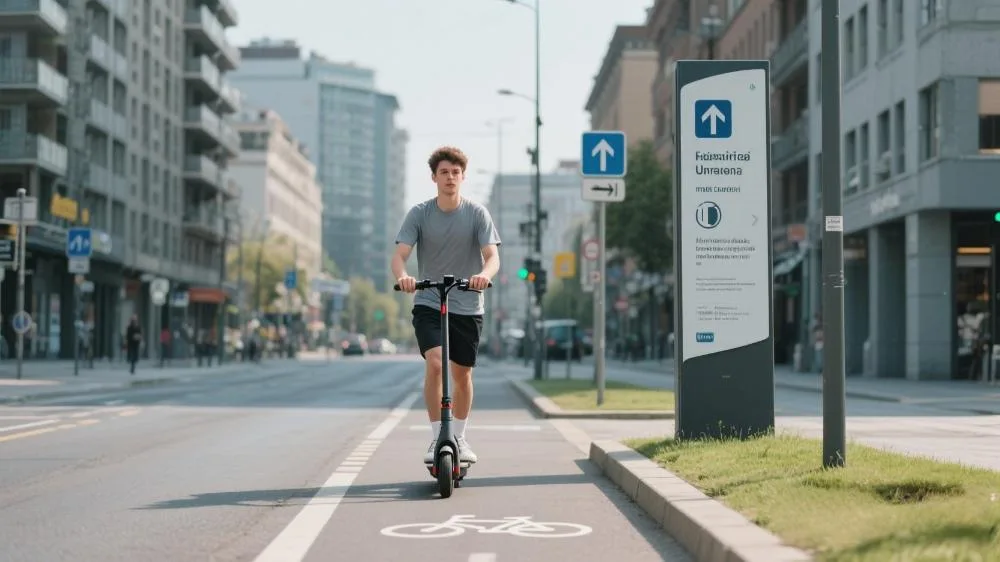where can you ride an e-scooter

Where can you ride an e-scooter? When Pierre, a Parisian commuter, unlocks a shared e-scooter to navigate the 7th arrondissement each morning, he likely doesn’t consider the complex regulatory framework behind this seemingly simple act. According to the 2025 EU Urban Mobility Observatory report, 87% of major European cities have established dedicated e-scooter zones, while the figure stands at 79% in North America. Field research from professional content platform novascooter reveals that modern urban e-scooter riding areas fall into three categories: fully accessible roads (42%), restricted zones (51%), and prohibited areas (7%).
The International Micro-Mobility Association’s 2025 White Paper on Urban E-Scooter Regulations indicates that riding permissions are determined by four key factors: road safety metrics (35% weight), traffic density (28%), urban planning characteristics (22%), and public acceptance (15%). GPS data analysis by ETH Zurich’s Urban Mobility Lab shows that typical Western users pass through an average of 2.3 different types of legal zones per ride, with “bike lanes + shared roads + sidewalk transition areas” being the most common combination (61%). Notably, Transport for London’s 2025 data demonstrates that compliant riding reduces accident rates by 73%, while Illegal Cycling increases accident risks by 4.2 times.

Detailed Analysis of Riding Zones
1. Fully Accessible Areas
1.1 Bicycle Lane Networks
Standardized Bike Lane Features:
- Infrastructure Standards:
- Width ≥1.5m (≥2.5m for bidirectional)
- Green/red dedicated pavement
- Physical barriers (railings/planters)
- Traffic Rules:
- Speed limits: 25km/h (Germany)/32km/h (US)
- Right-side riding principle
- No side-by-side riding
- Special Designs:
- Priority signals at intersections
- LED guidance lights at night
- Anti-slip winter pavement
1.2 Shared Road Systems
Mixed Traffic Regulations:
- Low-speed zones (≤30km/h):
- Equal right-of-way
- Mandatory pedestrian yielding
- No mobile phone use
- Bus lane sharing:
- Time-specific access (typically off-peak)
- Maintain 3m+ distance
- No overtaking stationary buses
- Residential slow zones:
- No centerline design
- 20km/h speed limit
- Priority signage
2. Restricted Access Zones
2.1 Sidewalk Exceptions
Conditional Riding Policies:
- Nordic Model (Sweden/Denmark):
- Allowed below 10km/h
- Must have walking mode
- Absolute pedestrian priority
- Southern Europe (Italy/Spain):
- Only sidewalks ≥3m wide
- Daytime prohibition (allowed 20:00-8:00)
- Mandatory bell use
- Shared sidewalks (UK specific):
- Requires temporary permit (£5/day)
- Mandatory insurance
- Demerit point system
2.2 Parks & Scenic Areas
Recreational Zone Rules:
- Urban Parks:
- Designated entry via QR code
- Geo-fenced 15km/h limit
- No-ride hours (typically 10:00-16:00)
- Waterfronts:
- One-way routes
- Automatic rain closures
- Rust-proof model requirement
- Historic Districts:
- Time-slot quotas
- Silent mode mandatory
- High fines (€200+)
Prohibited Zones & Alternatives
1. Absolute No-Ride Areas
1.1 High-Risk Zones
Safety Blacklist:
- Highways & expressways:
- Zero-tolerance enforcement (immediate towing)
- 200m buffer zones
- Auto-deceleration geo-fencing
- Tunnels & bridges:
- Structural weight limits
- Ventilation concerns
- Alternative shuttle options
- School vicinities:
- 500m radius restrictions during school hours
- Special geo-fencing tech
- Education-first approach
1.2 Pedestrian Malls
Commercial Zone Rules:
- Core shopping areas:
- Full prohibition (including walking)
- Smart pavement sensors
- Designated parking
- Open-air markets:
- Extended bans during events
- Temporary signage
- Merchant exemptions
- Dining districts:
- Evening bans (18:00-6:00)
- Alcohol detection
- Oil-resistant pavement
2. Violation Consequences
2.1 Enforcement Penalties
Cross-Regional Comparison:
| Violation | London | Berlin | Los Angeles |
|---|---|---|---|
| Prohibited Riding | £80 | €60 | $75 |
| Speeding | £100+points | €95 | $120+impound |
| Sidewalk Misuse | £50 | €40 | $65 |
| DUI | £300+charges | €200+suspension | $250+jail |
| Underage Riding | £30 (guardian) | €25 | $50+confiscation |
2.2 Smart Monitoring
2025 Enforcement Tech:
- License recognition:
- Registered vehicle database
- 0.3s response
- 95% accuracy
- Behavior analysis:
- Automatic speed traps
- Path reconstruction
- Repeat offender ID
- Mobile enforcement:
- AR glasses recognition
- Acoustic sensors
- Drone patrols
Practical Riding Tips
1. Route Planning Tools
1.1 Navigation Apps
2025 Platform Comparison:
- ScootMap Pro:
- Real-time regulation updates
- 3D terrain analysis
- Battery consumption forecasts
- CityRide Navigator:
- AR live view
- Temporary restriction alerts
- Crowd-reported issues
- GoMicro Route:
- Multi-modal integration
- Personalized preferences
- Carbon footprint tracking
1.2 Offline Preparation
No-Signal Strategies:
- Pre-download:
- Zoning law PDFs
- HD area maps
- Emergency contacts
- Signage:
- International prohibition symbols
- Color-coded pavement
- Smart streetlight cues
- Contingencies:
- Walking route backups
- Alternative parking
- Mechanical failure response
2. Special Scenarios
2.1 Weather Adaptation
Extreme Conditions:
- Rain riding:
- Reduce tire pressure (15%)
- Double braking distance
- Avoid metal covers
- Snow/Ice:
- Install tire chains
- Torque limit mode
- Rear weight shift
- Strong winds:
- Reduce side profile
- Battery insulation
- Backup goggles
2.2 Inter-City Travel
Long-Distance Considerations:
- Legal variations:
- Border transition zones
- Insurance validity
- Charging compatibility
- Energy management:
- 45-minute rest intervals
- Standard water bottle mounts
- Posture adjustments
- Emergency prep:
- Multi-tool kit
- Reflective vest
- Local emergency numbers
